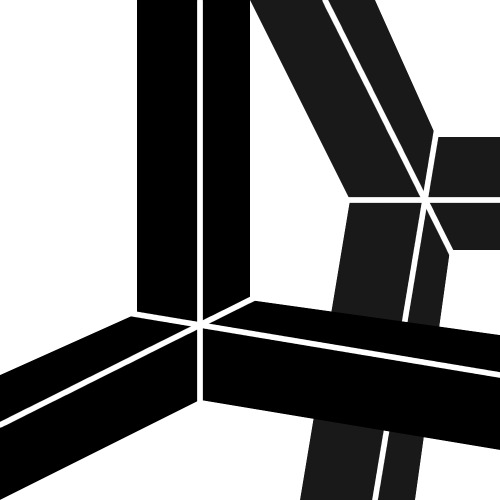Notes on metamodernism is a webzine documenting trends and tendencies across aesthetics and culture that can no longer be understood by a postmodern vernacular but require another idiom – one that we have come to call metamodernism. Written by academics and critics from around the globe, Notes on metamodernism features observations on anything from the Berlin art scene to US cinema, from London fashion shows to network cultures.
Month: November 2011
Metanarrative
A metanarrative from meta grand narrative, in critical theory and particularly postmodernism, is an abstract idea that is thought to be[who?] a comprehensive explanation of historical experience or knowledge. According to John Stephens, it “is a global or totalizing cultural narrative schema which orders and explains knowledge and experience”.[1] The prefix meta- means “beyond” and is here used to mean “about”, and narrative is a story constructed in a sequential fashion. Therefore, a metanarrative is a story about a story, encompassing and explaining other “little stories” within conceptual models that make the stories into a whole.In postmodern philosophy, a metanarrative is an untold story that unifies and totalizes the world, and justifies a culture’s power structures. Examples of these stories are nationalisms, religion, and science, to name a few. Metanarratives are not usually told outright, but are reinforced by other more specific narratives told within the culture.In communication and strategic communication, a master narrative or metanarrative is a “transhistorical narrative that is deeply embedded in a particular culture.”[2] A master narrative is therefore a particular type of narrative, which is defined as a “coherent system of interrelated and sequentially organized stories that share a common rhetorical desire to resolve a conflict by establishing audience expectations according to the known trajectories of its literary and rhetorical form.”[2]
C N C P T N

+ Wouter Huis – Sentences Conceptual After the written sentences of Sol Lewitt, sung by John Baldessari in 1972. Wouter Huis is a Dutch visual and sound artist working across a variety of media. Sol Lewitt’s Sentences on Conceptual Art can be found at altx.com/vizarts/conceptual.html
+ Wouter Huis – Sentences Conceptual
After the written sentences of Sol Lewitt, sung by John Baldessari in 1972.
Wouter Huis is a Dutch visual and sound artist working across a variety of media. Sol Lewitt’s Sentences on Conceptual Art can be found at altx.com/vizarts/conceptual.html
via C N C P T N.
Frequency response
Frequency response is the quantitative measure of the output spectrum of a system or device in response to a stimulus, and is used to characterize the dynamics of the system. It is a measure of magnitude and phase of the output as a function of frequency, in comparison to the input. In simplest terms, if a sine wave is injected into a system at a given frequency, a linear system will respond at that same frequency with a certain magnitude and a certain phase angle relative to the input. Also for a linear system, doubling the amplitude of the input will double the amplitude of the output. In addition, if the system is time-invariant, then the frequency response also will not vary with time.
Sonic Visualiser
Sonic Visualiser 1.0 showing a waveform pane and a melodic range spectrogram pane. (The music is “After the Pain” by Carlos Pino.)
Overlaid on the spectrogram is a note layer, showing the output of a note-tracker Vamp plugin that is being evaluated. The notes from the tracker are played using a piano sample, configured in the plugin dialog visible.
via Sonic Visualiser.
Jacob Kirkegaard – Gymnasium
signals
.
Introducing signals
In electronic circuits things happen. Voltage/time, V/t, graphs provide a useful method of describing the changes which take place.
The diagram below shows the V/t graph which represents a DC signal:
via signals.
Dynamic range compression
Dynamic range compression, also called DRC (often seen in DVD and car CD player settings) or simply compression reduces the volume of loud sounds or amplifies quiet sounds by narrowing or “compressing” an audio signal’s dynamic range. Compression is commonly used in sound recording and reproduction and broadcasting.[1]
The dedicated electronic hardware unit or audio software used to apply compression is called a compressor. Compressors often have attack and release controls that vary the rate at which compression is applied and smooth the effect.
via Dynamic range compression – Wikipedia, the free encyclopedia.
Noise
In common use, the word noise means any unwanted sound. In both analog and digital electronics, noise is random unwanted perturbation to a wanted signal; it is called noise as a generalisation of the acoustic noise (“static”) heard when listening to a weak radio transmission with significant electrical noise. Signal noise is heard as acoustic noise if the signal is converted into sound (e.g., played through a loudspeaker); it manifests as “snow” on a television or video image. High noise levels can block, distort, change or interfere with the meaning of a message in human, animal and electronic communication.
Fletcher–Munson curves
The Fletcher–Munson curves are one of many sets of equal-loudness contours for the human ear, determined experimentally by Harvey Fletcher and Wilden A. Munson, and reported in a paper entitled “Loudness, its definition, measurement and calculation” in Journal of the Acoustic Society of America[1].
via Fletcher–Munson curves – Wikipedia, the free encyclopedia.
